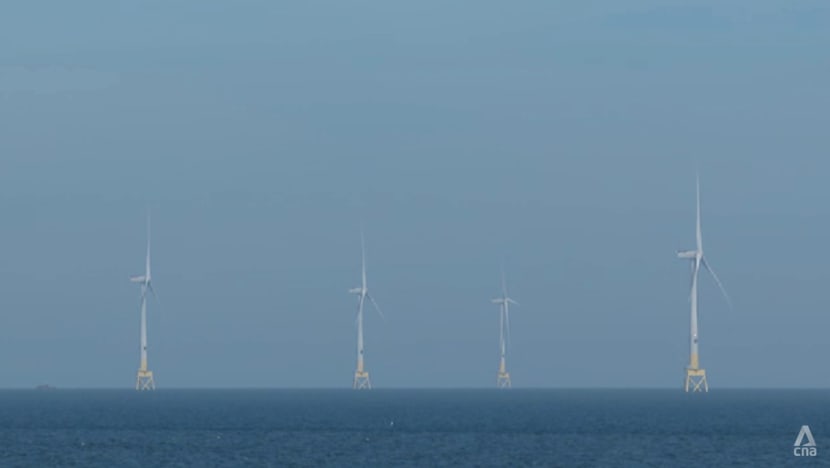Singapore’s marine and offshore firms explore overseas markets to seize wind energy opportunities
Singapore maritime companies are offering their expertise in countries as far-flung as Scotland.

Singapore's maritime companies are looking to secure their spot in the growing wind energy space.

This audio is generated by an AI tool.
ABERDEEN, Scotland: Singapore's maritime companies are looking to secure their spot in the growing wind energy space, offering their expertise in countries as far-flung as Scotland.
This comes as the offshore wind industry is poised for growth globally, with “notable opportunities” arising from current supply chain gaps, said Enterprise Singapore (EnterpriseSG).
The agency has been engaging players in the global offshore wind ecosystem to identify areas of collaborations for Singapore firms. Among its efforts are organising trade missions that help these companies connect with overseas business partners.
“Despite the lack of a domestic wind energy market, there is scope to build on Singapore’s established expertise in marine and offshore energy to support regional and even global projects,” said EnterpriseSG director for Europe Alan Yeo.
In particular, there are “crossover capabilities” from Singapore’s oil and gas companies due to their experience in building oil rigs and providing ancillary services for offshore activities, he added.
“The scale of the infrastructure and assets, as well as operating conditions in the offshore (oil and gas) space, have similarities to that in offshore wind farms.”
OFFERING EXPERTISE OVERSEAS
By 2030, the international offshore wind industry is set to be worth about US$126 billion. Key growth markets include the United States, Europe, South Korea, Vietnam, and Australia.
In Europe, in particular, the green transition is among the top priorities of governments, which have set out ambitious plans with large projects in the pipeline, said Mr Yeo.
Among the Singapore firms hoping to make waves in overseas markets is mooring solutions specialist Mooreast, which helps to anchor wind farms to the seabed among other deep-sea operations.
Mr Barry Silver, managing director at Mooreast UK and Ireland, said the work involves large and heavy equipment.
“It's not something you can move particularly easily, so therefore, it's very important that we have proximity to port infrastructure,” he added.
“About 60 to 70 per cent of the floating offshore wind fields are within close proximity.”
Cyan Renewables is a Singapore-based offshore wind vessel operations firm providing boats to conduct seabed inspections before a wind farm is built. These vessels survey sea beds and ensure biodiversity is protected under the sea, among other tasks.
The firm is looking to leverage on its track record and experience in Europe, said the firm’s CEO Lee Keng Lin.
“When our customers are in Asia, which is a fast growing area, we are able to leverage the expertise, adapt to the local requirements and the local constraints, and develop solutions which are cost effective for them.”
For instance, Japan is looking at offshore wind projects to power 10 gigawatts of power by 2030.
Closer to Singapore, Vietnam aims to have a domestic offshore wind capacity of about 6 gigawatts.
MAKING THE SECTOR MORE ATTRACTIVE
Meanwhile, the Association of Singapore Marine and Offshore Energy Industries, which represents companies in the business of ship repair, conversion, building, rig building and offshore engineering, wants to get more firms to tap business opportunities overseas.
While the opportunities are plentiful, the association told CNA that local companies are finding it hard to tap them. This is because the sector faces a shortage of talent with relevant engineering skills and innovative ideas.
But the association is hoping to make the sector more attractive.
“We are doing quite a fair bit to reach out to young people, to get them to relook at this industry because it was not traditionally attractive, but it's changed a lot,” said Mr Wilson Ang, the association’s executive director.
“It's digitalised. It’s becoming cleaner. It's looking at providing solutions for a more sustainable future,” he added.
“Similarly, there's this perception that being an engineering company, you need to have many years of experience. Yes, but this industry is also very welcoming of mid-career people who are keen to come in.”
A guide for marine and offshore companies is currently being worked on and will be ready by the end of the year, covering various areas such as building a talent pool and how firms can contribute to developing wind farms.


















